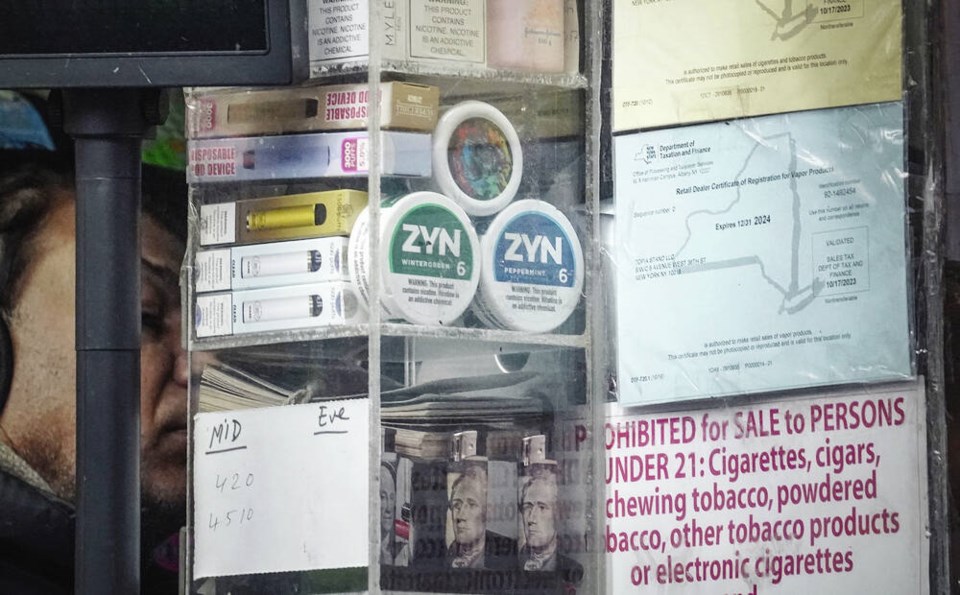Polls suggest that 70 per cent of British Columbians are dissatisfied with the province’s efforts to tackle the health-care crisis. That matches opinions across the country.
Yet on one issue at least, progress has been made.
In February, Health Minister Adrian Dix banned the sale of nicotine pouches in convenience stores. These small gauze-like pouches are held between gum and cheek. They contain no tobacco, and so are not pungent or bitter-tasting.
Frequently they are marketed in candy wrappers with fruit flavouring, and before Dix stepped in, they could be purchased by kids of any age. That still remains the case in every province except B.C. and Quebec.
Yet while these pouches contain less nicotine than the typical cigarette, they are still highly addictive.
Following Dix’s order, they may now be sold only by pharmacies, and then only with proof the purchaser is 18 or over.
That things got this far is a case study in federal sleep-walking. Last July, Health Canada granted a permit for the sale of nicotine pouches in Canada, accepting the industry’s argument that they are a smoking cessation aid.
However, no age limit was set, which meant, as David Hammond, a health sciences professor at the University of Waterloo noted, “If they could reach the counter, a toddler could wander in and buy some.”
Public health officials across the country are horrified. The evidence that nicotine products are addictive is overwhelming. Worse still, young people are most at risk, because the developing brain is vulnerable. Among the accompanying effects of nicotine consumption are mental health issues, loss of impulse control, diminished cognitive capacity, and sleep loss. There is also a greater risk of developing mouth and throat cancers.
Most troubling, studies show that the younger people are when they become addicted, the more difficult it becomes for them to quit. And this is only the beginning of the story. There have been scant few tests on the longer-term effects of nicotine consumption, though the presence of carcinogens is well established.
In many respects this blunder resembles the roll-out of e-cigarettes six years ago. Canada now has one of the highest teen vaping rates in the world, with 41 per cent of teens in Grades 10 to 12 having tried e-cigarettes.
Yet here, too, the long-term consequences are not known, although the aerosols they generate are carcinogenic.
Perhaps the most frustrating aspect of giving free rein to nicotine pouches is that it comes at a time when anti-smoking campaigns are finally paying off.
In 1950, nearly 70 per cent of men and 40 per cent of women smoked, country-wide. Today in B.C. only 10 per cent of adults smoke cigarettes, an all-time low, and hospitals are reporting drops in patients with tobacco-related ailments.
Much of that success has now been placed at risk.
For the tobacco industry has gone to great lengths to find substitutes for cigarettes, and products like nicotine pouches are being packaged as candy and marketed directly at children.
Last month, federal Health Minister Mark Holland, whose department opened this door, said he will explore “regulatory options” to keep nicotine pouches out of the hands of children. How long this will take is anyone’s guess. Too little, too late would be one estimate.
This was a completely unforced error. How could the officials who gave a green light to nicotine pouches fail to place an age limit on them?
And why are these products not labelled damaging to health, as cigarettes are?
The tobacco industry’s indifference to the well-being of their customers is well established. We expect better from the federal department responsible for our health.
>>> To comment on this article, write a letter to the editor: [email protected]



